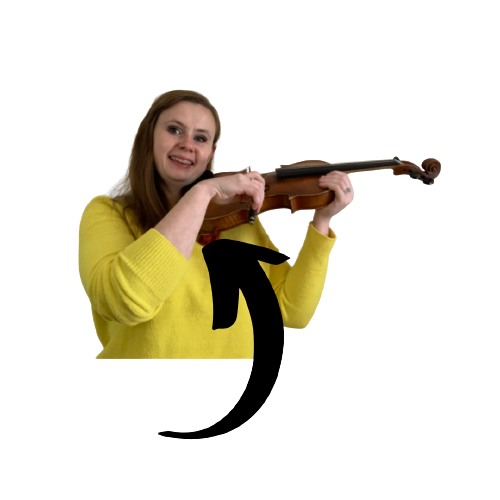How to get a straight bow
Keeping the violin bow straight while playing is much more difficult than one might think. To get a straight bow, your hand will not move in a straight line, but rather in a crescent moon shape: outwards on a down bow approaching the tip, and inwards on an up bow approaching the frog. Counterintuitive much?
Why is getting a straight bow so important?
A straight bow is vital for producing an even sound. Between the bridge and the fingerboard, there are an infinite number of spots where the bow can land (called contact points) and each one sounds slightly different. If the bow is closer to the bridge, the sound is louder and harsher, and if the bow is closer to the fingerboard, the sound is softer and lighter. So if your bow is not straight, it is changing contact points during the bow stroke which changes the quality of the sound. This is not inherently a bad thing and can be manipulated to create dynamics and characters; however, it should only be done intentionally.
How do you get a straight bow?
To get a straight bow, move your hand in a crescent moon shape. At the frog, start with your hand "close to your face.” This means that your wrist is slightly above your hand and angled towards you. In fact, it should be so tilted that the tip of your bow may look crooked at this point. That’s okay. Trust the process ;)
To go back up bow, draw your bow to the middle and then stop. A you move towards the frog, bring your hand in towards you and allow your wrist to come up.
Be careful not to overdo this motion so that the bow gets crooked in the opposite way. This is a very subtle motion and the goal is to make sure the bow stays straight.
How to tell if the bow is straight.
For beginners, it is hard to feel when the bow is straight, so I recommend using visual cues instead. Practice in front of a mirror, record yourself, and watch your bow as much as possible when playing. When watching your bow, your eyes should lock in on the space between your bow and the bridge.
Check out the video below for a demonstration of how to get a straight bow when playing the violin.


